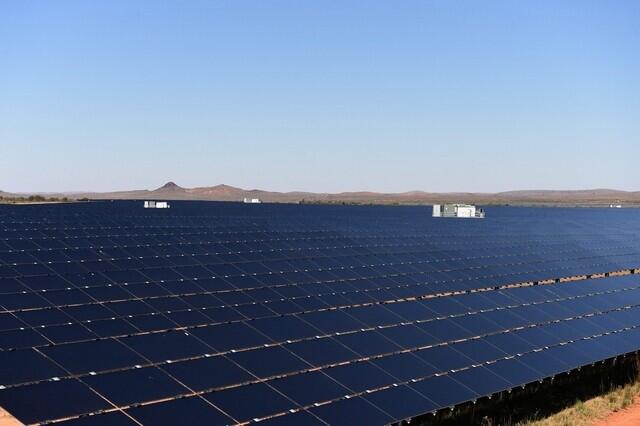Cheap solar energy can help to tackle the region’s rising power demand, but difficulties are ahead for incubating a local market as margins thin.
The UAE is redefining the solar industry as the latest project in Abu Dhabi attracted record low bids announced on Monday. For the 350 megawatt solar photovoltaic (PV) project in Sweihan, about 120 kilometres from the capital, the lowest submitted price came in at 2.42 US cents per kilowatt hour (kWh).
This is so low that the solar used to generate 16,000 kWh for an average home in the UAE would cost less than Dh1,500 a year – that is just over Dh100 per month (although actual retail prices depend on many variables).
Many said that this is the beginning of the end, with competition squeezing margins to the point of no return. Developers are sitting pretty, with manufacturers and contractors rushing to battle one another to bring the lowest price and join these major solar projects.
But the loser in all of this will be the manufacturing sector.
The Saudi Arabian developer Abdul Latif Jameel said price pressure could drive consolidation in manufacturing as higher volumes and component efficiency are also supporting lower costs. “We continue to submit proposals for projects worldwide that are very competitive and in each one, we reflect the latest cost calculations and forecasts,” said Roberto de Diego Arozamena, the chief executive of Abdul Latif Jameel Energy.
While the region is looking to set the bar on pricing, it is also hoping to become a manufacturing hub for the industry. Saudi Arabia was one of the countries that announced how it wanted to be a leader in manufacturing after it unveiled plans to add 9.5 gigawatts of renewable energy to its power mix earlier this year.
Not only are these prices tightening margins, but a solar panel supply glut is surfacing that will force regional manufacturing ambitions to be reassessed.
Total module, or solar panel, manufacturing capacity globally is about 160GW a year, according to Bloomberg New Energy Finance (BNEF). However, not all of this is operational and some are only collecting dust in factories just waiting for orders to flow. “We hear of significant inventory build-up which means more lean times for manufacturers,” said Jenny Chase, a solar analyst at BNEF.
Developers are unwilling to sign contracts a year in advance as the prices are simply unstable, she said. “BNEF benchmarks module prices early next year at 46 cents per watt, but right now you can buy modules cheaper – especially for inventory from non-bankable suppliers,” she added.
Mergers and acquisitions may also be on the cards, and Ms Chase said that the industry is heading for another wave. BNEF counted 237 module makers active this summer and while that number may remain, it is not necessarily indicative of a robust sector. “There are always new entrants as well, so the number of manufacturers will not necessarily go down,” she said.
The industry will need to consolidate down to those with the best supply chains, which is likely to include government backing in the form of grants, according to Mohammed Atif, the Middle East and Africa regional manager for DNV GL, a consultancy working on renewable energy tenders in Saudi Arabia.
He believes solar will follow the oil and gas path, evolving into a sector with “supermajors” – as big names in hydrocarbons such as BP are dubbed – and smaller, niche players.
“The big question is whether the meteoric growth in demand worldwide will also have the same impact on price fluctuations as they have had in other commodity markets,” he said.
If prices get so low from international manufacturers, companies in the region will need to either compete by dropping costs or rethink strategy. “And this is a concerning prospect for any job development-related ambitions that the Middle East North Africa region may have,” he said.
The US developer and manufacturer First Solar said that it was hard to discuss manufacturing in any region at present. “We need another 12 to 24 months before we get a picture of the supply and demand which gives a new direction,” said Ahmed Nada, First Solar’s vice president and regional executive for the Middle East.
It is possible that some companies will leave the industry if prices remain this low for an extended period of time. “There’s a limit of how far you can drive the costs down,” Mr Nada said.But generally, the consensus is that these prices are here to stay, but may not be as low for smaller projects.
“Prices will remain low and trend even lower over the long-term, but not every price point will be strictly lower than this new record,” said Moritz Borgmann, a partner at the cleantech advisory Apricum.
Source: The National











